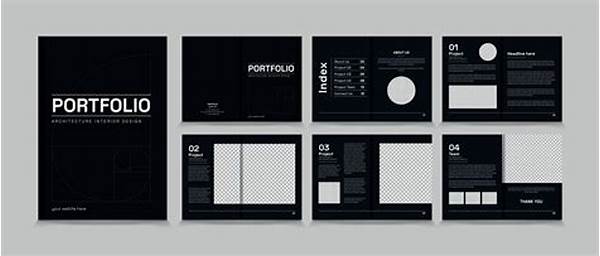In the contemporary professional landscape, the portfolio serves as a critical showcase of an individual’s capabilities, experiences, and achievements. The layout and organization of a portfolio are paramount in effectively conveying the intended message and making a compelling impression on the audience. A well-structured portfolio not only highlights key accomplishments but also demonstrates the creator’s attention to detail and organizational skills. Therefore, understanding how to craft a layout and meticulously organize its contents is essential for individuals seeking to present their professional journey convincingly.
Read Now : Mobile-optimized Educational Platforms
Importance of Structure in Portfolio Layout and Organization
The structure of a portfolio plays a pivotal role in its ability to communicate effectively. One must consider the target audience, their preferences, and the message intended to be conveyed when deciding on the portfolio layout and organization. A coherent structure ensures that the information flows logically, making it easier for the audience to navigate through the different sections. Furthermore, incorporating an aesthetically pleasing design complements the substantive content, thereby enhancing the overall presentation and impact of the portfolio. The organization of a portfolio must facilitate quick access to pertinent information, ensuring that readers can readily locate the sections that are most relevant to their interests or requirements.
Core Elements in Portfolio Layout and Organization
1. Clarity and Simplicity: The portfolio layout and organization should prioritize clarity and simplicity. A clutter-free design ensures that the focus remains on the content, while simplicity aids in navigation.
2. Chronological Arrangement: Presenting work or experiences in a chronological order helps to illustrate the progression of skills and professional development over time.
3. Categorization by Skill or Industry: Organizing content based on skill sets or specific industries allows for easy filtering of information according to what is most relevant for the reader.
4. Visual Consistency: Maintaining a consistent visual theme throughout the portfolio enhances its professionalism. This includes using uniform fonts, color schemes, and design elements.
5. Incorporation of Technology: The use of digital tools and multimedia elements can enrich the portfolio layout and organization, making it more engaging and dynamic.
Read Now : Venture Capital Market Dynamics
Enhancing Impact through Portfolio Layout and Organization
Effective portfolio layout and organization enhance the impact of the content presented. By implementing a strategic organization strategy, individuals can ensure that their most impressive work is prominently featured, capturing the attention of potential employers or clients. A thoughtfully devised layout can also emphasize specific strengths and competencies while subtly guiding the reader through a narrative that supports the individual’s professional narrative. Furthermore, deliberate use of visual and textual elements can greatly enhance the readability of the portfolio, facilitating a positive response from its audience.
Visual Design Considerations in Portfolio Layout and Organization
The visual design of a portfolio is integral to its success. Incorporating appealing visuals harmoniously with textual content can transform a generic portfolio into one that distinctly stands out. By understanding design principles, such as balance, contrast, and alignment, individuals can create portfolios that not only convey information but also engage and guide the reader through the content seamlessly. Elements like infographics, images, and interactive media can be effectively integrated into the portfolio layout and organization to enhance understanding and retention of the material presented.
Storytelling in Portfolio Layout and Organization
Storytelling is a powerful tool that can be integrated into the portfolio layout and organization to create a compelling narrative. Through strategic placement of content, individuals can build a story of their professional journey, showcasing milestones, challenges overcome, and notable achievements. This approach not only provides context but also allows the audience to connect emotionally with the content. By weaving a narrative, the portfolio becomes more than a repository of work samples and transforms into a dynamic story that portrays the individual’s passion, dedication, and unique contributions to their field.
A Summary of Portfolio Layout and Organization
In sum, the layout and organization of a portfolio are fundamental in crafting a compelling professional narrative. A logical, well-structured portfolio not only facilitates the audience’s understanding but also leaves a lasting impression through its visual and textual harmony. By adopting a strategic approach to organizing content, incorporating both traditional and modern elements, and utilizing storytelling, professionals can distinguish themselves in competitive fields. The portfolio becomes a dynamic tool that resonates with audiences, effectively communicating the individual’s professional strengths and aspirations. Additionally, the importance of understanding the specific needs and preferences of the targeted audience cannot be overstated, as a tailored approach to portfolio layout and organization can significantly enhance its impact and effectiveness.
